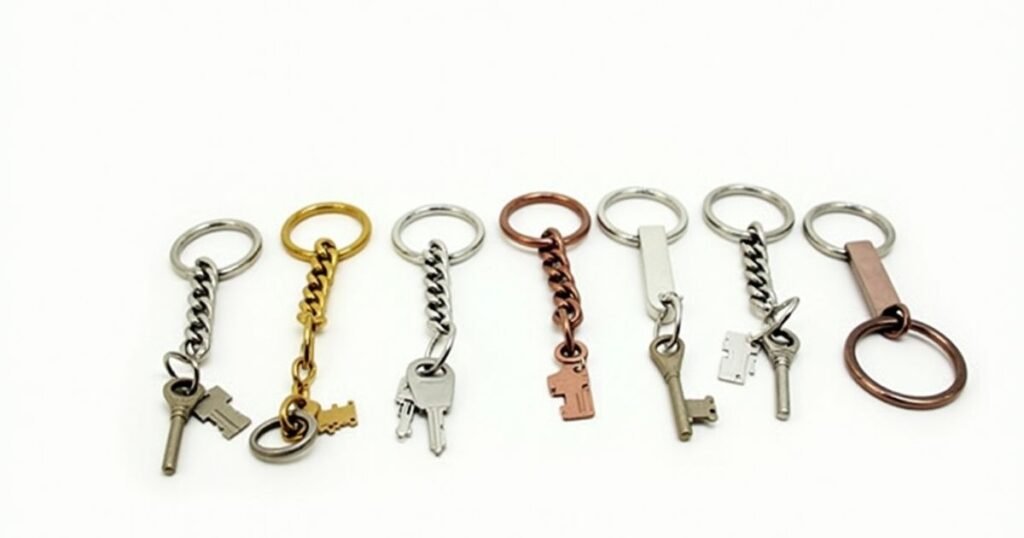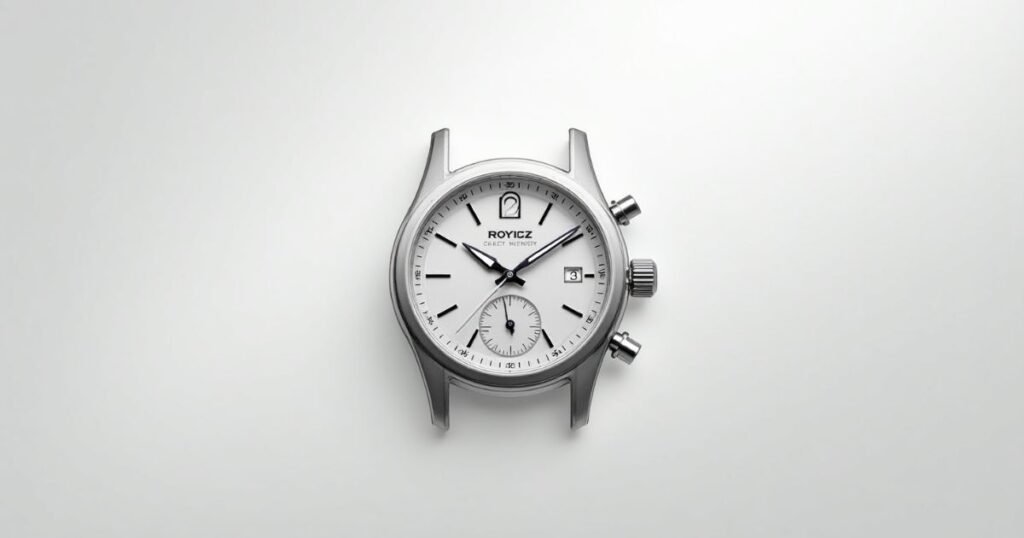Have you ever found yourself in a situation where you needed to quickly estimate if something was around 2 inches in size? Perhaps you were assembling furniture without a ruler, describing an object to someone over the phone, or simply trying to visualize a measurement mentioned in a recipe or craft project. While seemingly small, the 2-inch measurement appears surprisingly often in our daily lives, from the gadgets we use to the food we eat.
How Long is 2 Inches Compared to Objects?
Two inches is approximately the width of an adult’s thumb from knuckle to tip. It’s about the height of a standard wine cork or the width of a standard U.S. credit card. This modest measurement just under the length of a golf tee serves as an essential reference point in many industries, from construction to technology. Understanding what 2 inches looks like can help with everything from home improvement projects to cooking measurements when precision tools aren’t available.
1. The Standard Wine Cork

That cylindrical stopper keeping your favorite wine fresh typically measures right around 2 inches in length. While there are variations in wine cork sizes, the classic natural cork measures approximately 2 inches long with a diameter of about 0.9 inches. This length has been standardized over centuries to provide the optimal seal for wine bottles while allowing for easy removal.
Wine corks achieve their perfect 2-inch length through careful harvesting and processing. Cork comes from the bark of the cork oak tree (Quercus suber), which is stripped by hand every nine years without harming the tree. The uniform 2-inch length ensures the cork sits deeply enough in the bottle’s neck to prevent air exposure while leaving enough cork exposed for grip when opening.
Interestingly, the oldest known wine cork still intact on a wine bottle dates back to the 17th century. The standardized 2-inch cork has remained largely unchanged despite modern alternatives like synthetic corks and screw caps, demonstrating the enduring practicality of this measurement in wine preservation.
2. Standard Golf Tees

When golfers prepare for their drive off the tee box, they’re likely using a tee that’s very close to 2 inches in length. Standard golf tees typically range from 2 to 2.75 inches, with the 2-inch version being perfect for iron shots and mid-range drives.
The 2-inch golf tee provides the ideal height for many golfers to position the ball slightly elevated off the ground without placing it too high for clean contact. Shorter tees like these help control trajectory and are often preferred by more experienced players who want less loft on their shots.
Golf tees weren’t always the small, manufactured items we know today. In the early days of golf, players created small mounds of sand to elevate their ball. The 2-inch wooden tee first appeared in the 1920s, revolutionizing the game by offering consistent ball height and eliminating the need for caddies to carry containers of moist sand.
3. Standard SD Memory Cards

In our increasingly digital world, the humble SD card remains a staple for data storage in cameras, gaming devices, and various other electronics. Standard SD cards measure almost exactly 2 inches long (technically 32mm or 1.26 inches) by 24mm (0.94 inches) wide.
This compact 2-inch form factor revolutionized portable data storage when it was introduced in 1999. Despite their small size, modern SD cards can hold an astonishing amount of data up to 1 terabyte in the same 2-inch package that originally held just 8 megabytes when first released.
The precise 2-inch dimension of SD cards was carefully chosen to balance portability with usability. They needed to be small enough to fit in compact electronic devices yet large enough to be handled without being easily lost. This standardized size has enabled incredible compatibility across thousands of different devices worldwide.
The influence of the 2-inch SD card extends beyond photography and computing—this measurement has become the reference standard for numerous other memory card formats that needed to fit similar device slots.
4. Guitar Picks

Musicians who strum or pick guitars are likely familiar with the standard guitar pick, which typically measures around 2 inches in length. While picks come in various shapes and thicknesses, the classic teardrop-shaped pick usually measures about 2 inches from top to bottom and about 1 inch across at its widest point.
This 2-inch dimension has been refined over decades to provide the perfect balance between control and flexibility. It fits comfortably between the thumb and index finger while providing enough surface area to strike guitar strings with precision. The standard size allows guitarists to execute techniques ranging from gentle fingerpicking to aggressive strumming.
Guitar picks have a fascinating history dating back to ancient plectrums made from tortoiseshell, bone, and wood. Today’s 2-inch plastic picks became standardized in the early 20th century as guitar playing became more widespread. Famous musicians often develop strong preferences for specific pick sizes and materials; some legendary guitarists even used unconventional items like coins or custom-cut credit cards as picks, though most hover near the 2-inch standard.
5. Standard Sushi Rolls

The next time you enjoy sushi, take note of the roll’s diameter most standard maki rolls measure almost exactly 2 inches across. This consistent size has become the international standard for sushi preparation, allowing chefs to create uniform pieces that are easy to eat in a single bite.
The 2-inch diameter emerged through centuries of refinement in Japanese cuisine. Sushi masters determined this size offers the perfect rice-to-filling ratio while remaining manageable to eat with chopsticks. The bamboo rolling mats (makisu) used to form sushi rolls are designed specifically to create this standard 2-inch diameter.
Sushi preparation elevates the 2-inch measurement to an art form. When a roll is cut into individual pieces, each section is typically about 1 inch wide, creating nearly perfect 2×1-inch portions. This careful attention to dimension contributes significantly to the aesthetic appeal and balanced flavors of properly prepared sushi.
Traditional sushi training can take years to master, with apprentices often spending months learning just how to properly form rice into the precise shapes needed for different styles many of which rely on the standard 2-inch measurement as their foundation.
6. AA Batteries

The ubiquitous AA battery, powering everything from remote controls to children’s toys, measures almost exactly 2 inches in length (50.5mm or 1.99 inches to be precise). This standardized size, established in the American National Standards Institute (ANSI) specifications, has remained unchanged since the 1940s.
The 2-inch length of AA batteries enables them to fit perfectly in a vast array of devices while providing enough internal volume to store significant energy. This dimension has become so standardized that device manufacturers worldwide design battery compartments around this exact measurement.
What makes the AA battery’s 2-inch length particularly significant is how this single measurement has unified power sources across nations and manufacturing standards. Whether produced in Japan, Germany, or the United States, the 2-inch AA battery will fit any compatible device regardless of where it was made.
Despite advances in rechargeable technology and alternative power sources, approximately 10 billion AA batteries are produced annually worldwide, making this 2-inch power cell one of the most manufactured items of its size on the planet.
7. Standard Lipstick Tubes

The classic lipstick bullet in its tube stands approximately 2 inches tall when fully retracted. This dimension has been refined over decades to provide the perfect balance between portability and usability. The 2-inch height allows enough product to last for months of applications while remaining small enough to fit easily in purses, pockets, and makeup bags.
Lipstick packaging designers have determined that the 2-inch height provides optimal handling tall enough to grip comfortably while applying but compact enough for convenient storage. The internal mechanism that raises and lowers the lipstick bullet is engineered precisely to fit within this 2-inch constraint.
The standard 2-inch lipstick tube emerged in the early 20th century as cosmetics became mass-produced consumer items. Prior to this standardization, lipstick was often sold in small pots or paper tubes. The development of the retractable lipstick in its now-familiar 2-inch metal or plastic case revolutionized the cosmetics industry by making the product more hygienic and convenient.
Interestingly, the average lipstick user will apply approximately 4 pounds of lipstick over their lifetime, most of it packaged in these standard 2-inch tubes.
8. Standard Key Chains

Most standard key rings and their attached fobs typically measure around 2 inches in total diameter or length. This consistently sized personal accessory has become standardized across the world, balancing portability with functionality and ensuring keys remain securely attached while being easy to locate in pockets or bags.
The 2-inch dimension allows key chains to comfortably fit around most fingers when carrying keys or securing them to belt loops. Manufacturers have determined this size provides enough space to hold several keys while preventing the ring from being stretched open under normal use conditions.
Key rings have an interesting history dating back to ancient civilizations where valuable items were secured on metal rings. The modern spring-loaded 2-inch key ring was patented in the early 20th century and has remained largely unchanged since. This simple yet effective design uses precise tension in the metal spiral to keep keys secure the 2-inch diameter providing enough circumference to accommodate multiple keys while maintaining sufficient tension.
A surprising fact: The average person handles their keys about 6,000 times per year, making the 2-inch key ring one of the most frequently touched metal objects in daily life.
9. Standard Chess Pieces (King)

In tournament-standard chess sets, the king, the tallest piece on the board, measures approximately 2 inches in height. This specific measurement has been formalized by the World Chess Federation (FIDE) to ensure consistent playing experiences across competitions worldwide.
The 2-inch king height establishes the scale for all other pieces in a proportional set. According to standard ratios, the queen measures about 1.8 inches, bishops and knights about 1.6 inches, rooks about 1.4 inches, and pawns about 1.2 inches. This graduated sizing helps players quickly identify pieces during play while maintaining aesthetic harmony across the board.
Chess piece dimensions evolved over centuries, but the standardization of the king at approximately 2 inches occurred in the early 20th century as international chess tournaments became more common. This specific height was determined to be ideal for adult players to grasp and move comfortably while providing sufficient visual distinction between pieces.
Interestingly, the iconic Staunton chess design, which features the standard 2-inch king, was created in 1849 by Nathaniel Cook and named after Howard Staunton, a leading chess player of that era. This design has remained the official standard for tournament play for over 170 years, demonstrating the enduring practicality of this specific dimension.
10. Standard Watch Face Diameter

Many classic wristwatches feature faces measuring approximately 2 inches in diameter (or about 38-42mm). This dimension has emerged as a versatile standard that fits comfortably on most adult wrists while providing sufficient space for readable dials and complications.
The 2-inch watch face represents a sweet spot in horological design large enough to be easily read at a glance yet not so large as to appear ostentatious or unwieldy on the wrist. Watch manufacturers have determined this size accommodates most movement mechanisms while maintaining proportion with standard wristbands.
While recent fashion trends have seen watch sizes fluctuate dramatically (from minimalist 34mm faces to oversized 50mm+ statement pieces), the classic 2-inch diameter remains the benchmark from which these variations are measured. Luxury watchmakers like Rolex, Omega, and Patek Philippe frequently return to this dimension for their most timeless models.
Remarkably, despite the advancement of digital timekeeping technology, mechanical watches with 2-inch faces remain highly sought after, with some luxury models containing over 400 precision components carefully engineered to fit within this compact space.
11. Standard Post-it Notes

Those ubiquitous sticky notes found in offices worldwide come in a variety of sizes, but the classic square Post-it note measures almost exactly 2 inches by 2 inches. This perfect square has become an international standard for quick notes and reminders since its accidental invention in 1974.
The 2×2-inch dimension strikes an ideal balance small enough to be unobtrusive when attached to documents yet large enough to contain a short message or reminder. This size also optimizes material usage during manufacturing while providing sufficient adhesive surface to ensure notes stay attached where placed.
The original Post-it Notes were the result of a failed experiment by 3M scientist Spencer Silver, who was attempting to create a super-strong adhesive but instead developed a “low-tack” reusable adhesive. The 2-inch square format was chosen during product development as it provided enough writing space while being economical to produce and convenient to stack and package.
Most people don’t realize that the distinctive canary yellow color of the original 2-inch Post-it Notes wasn’t a carefully considered design choice; it was simply the color of scrap paper available in the lab when prototypes were being developed. Today, over 50 billion of these 2-inch notes are sold annually in more than 100 countries and 25 different colors.
12. Standard Ravioli Pasta

Traditional square ravioli pasta typically measures approximately 2 inches on each side. This consistent sizing has evolved through centuries of Italian culinary tradition to provide the perfect balance between pasta and filling while ensuring even cooking and an ideal bite size.
Pasta chefs carefully control this 2-inch dimension to maintain the delicate ratio between the pasta wrapper and filling. Too large, and the ravioli risks breaking during cooking; too small, and the pasta overwhelms the filling. The standard 2-inch square allows for approximately one tablespoon of filling enough to deliver flavor while maintaining structural integrity during boiling.
The precise 2-inch measurement has practical culinary significance beyond aesthetics. This size allows ravioli to cook evenly in about 3-4 minutes, ensuring the pasta reaches al dente perfection while the filling heats through completely. Restaurant chefs rely on this standardized size to deliver consistent cooking times and portion sizing.
In northern Italian traditions, the specific 2-inch dimension of ravioli is sometimes attributed to the size of a raviolo being similar to the palm of a woman’s hand. While industrial production now ensures uniform sizing, traditionally made ravioli still follows this approximate 2-inch guideline that has been passed down through generations of Italian pasta makers.
13. Standard Pocket Lighters

The disposable butane lighter, a common household item for lighting candles, stoves, and grills typically measures almost exactly 2 inches in height. This standardized size allows these flame-producing tools to fit comfortably in pockets and drawers while containing enough fuel for hundreds of uses.
The 2-inch height of standard pocket lighters evolved through decades of design refinement to maximize portability while maintaining functionality. This specific dimension allows manufacturers to include sufficient fuel capacity, a reliable ignition mechanism, and a comfortable grip surface within a compact package.
When the iconic BIC lighter was introduced in 1973, its creators settled on the approximately 2-inch height after extensive ergonomic testing. This dimension proved ideal for operation with one hand while being small enough to carry unobtrusively. The measurement has since become the industry standard, with most competing brands adopting similar dimensions.
An impressive fact: a standard 2-inch disposable lighter can produce up to 3,000 flames before exhausting its fuel supply. Despite their small size, these lighters undergo rigorous safety testing, including being exposed to temperatures up to 130°F and dropped from heights of about 5 feet to ensure durability.
Practical Ways to Visualize 2 Inches Without a Ruler
Understanding how to estimate 2 inches without measuring tools can be incredibly useful in everyday situations. Here are some reliable methods to visualize this measurement:
- Use Your Thumb: For most adults, the width of the thumb from the first knuckle to the tip measures very close to 2 inches. This natural measuring tool is always available.
- Credit Card Width: Standard credit cards and ID cards are approximately 3.37 inches long, so about two-thirds of a card’s length equals roughly 2 inches.
- U.S. Currency: Two U.S. dollar bills placed end to end will measure very close to 2 inches in width (each bill is approximately 2.61 inches tall, so the width is slightly under 2 inches).
- Paper Clip Chain: Three standard paper clips linked together measure approximately 2 inches.
- Smartphone Comparison: Many smartphone screens are around 5-6 inches diagonally, so visualizing about one-third of your phone’s screen can give you a good approximation of 2 inches.
These reference points can be invaluable when you need to estimate measurements for home improvement projects, crafting, or determining if an item will fit in a specific space.
The Significance of 2 Inches in Daily Life
While it might seem insignificant at first glance, the 2-inch measurement plays a crucial role in numerous aspects of our lives. In cooking, 2 inches often represents the ideal thickness for steaks, the proper height for biscuits, or the recommended distance between cookies on a baking sheet.
In gardening, 2 inches is frequently the recommended planting depth for many seeds and the ideal layer of mulch to apply around plants. Construction and woodworking rely heavily on precise measurements, with 2 inches being a common dimension for lumber thickness, nail length, and hardware spacing.
Even in medicine, the 2-inch measurement appears regularly from the size of certain incisions to the length of standard hypodermic needles. Understanding this measurement helps healthcare providers communicate precisely about procedures and equipment.
Conclusion
As we’ve explored, the seemingly modest 2-inch measurement surrounds us in countless objects we encounter daily. From the wine corks preserving our favorite vintages to the batteries powering our devices, this dimension has been refined through years of practical application to serve specific purposes effectively.
The next time you’re without a measuring tool, remember these common 2-inch references to help estimate dimensions with reasonable accuracy. Whether you’re hanging a picture, selecting the right storage container, or following a recipe, the ability to visualize 2 inches can prove surprisingly valuable.
Challenge yourself to become more aware of this measurement in your daily environment. Look around your home how many 2-inch objects can you identify? You might be surprised to discover just how frequently this particular dimension appears in the items you use every day. This awareness not only satisfies curiosity but builds a practical skill that enhances your ability to navigate the physical world with greater confidence and precision.

I’m Ryan Miles, and I love making measurements simple. My site helps you find real-life examples of sizes, from 2 inches to 8 inches and beyond!

